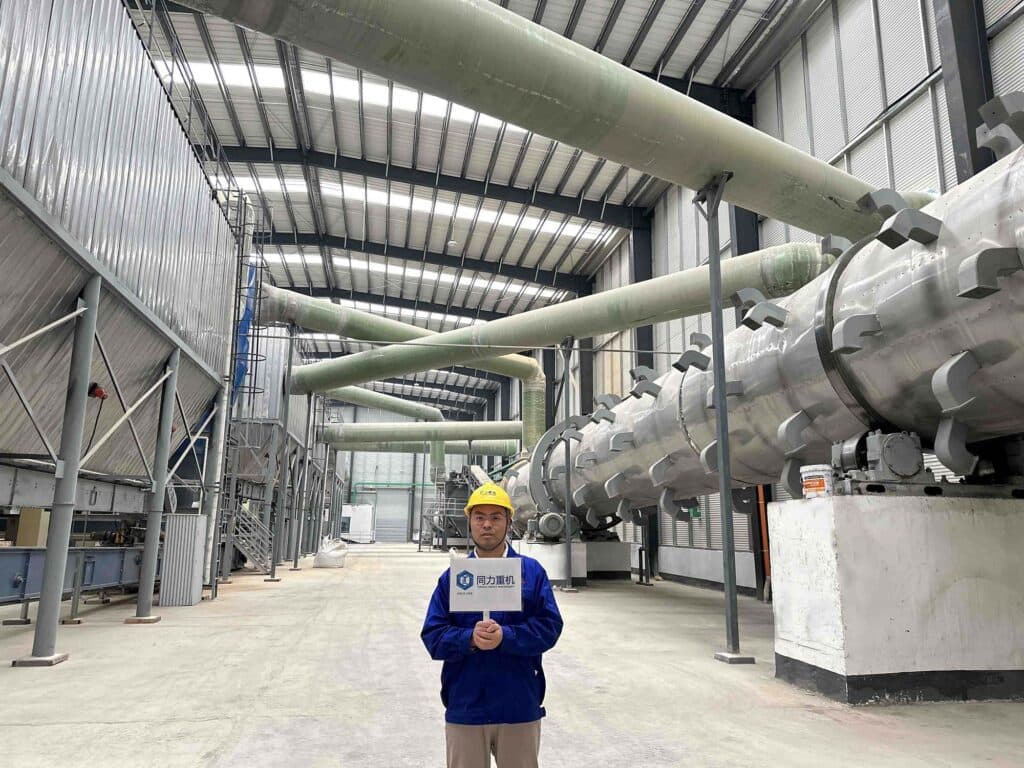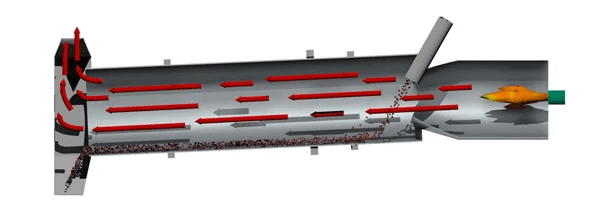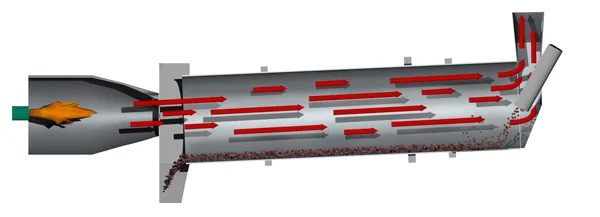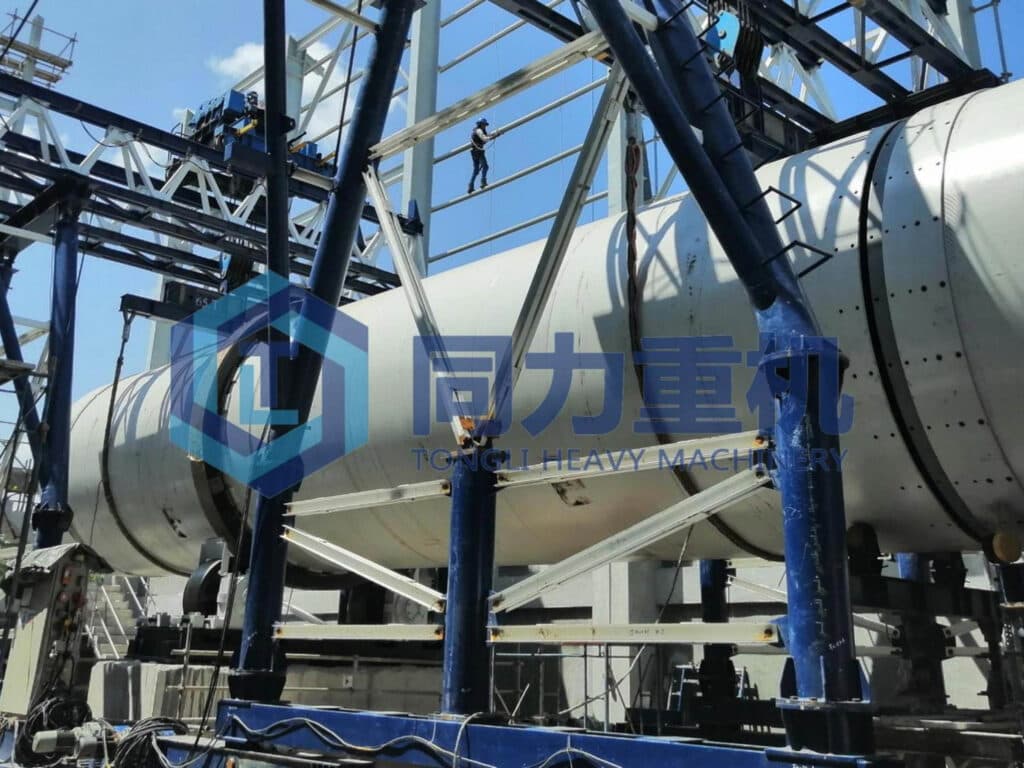Co-Current Vs. Counter Current Drying
In industrial production, the drying process of materials is a crucial part of the process, and choosing the right dryer configuration is vital to improving efficiency and ensuring product quality. As a common type of drying equipment, the design of a rotary dryer requires consideration of a variety of factors, including material characteristics and process requirements. This article will explore the two main rotary dryer airflow configurations – co-current and reverse flow, analyze their respective advantages and limitations, in order to help companies make a choice that better meets their production needs.

Rotary dryers are available in two airflow configurations: co-current and counter current. Both configurations have been extensively researched and developed to maximize the thermal efficiency of the rotary drying process. The choice of configuration depends on the characteristics of the material as well as the overall process requirements, so understanding how each airflow configuration works is critical to selecting the most suitable drying process.
Co-current dryers: gentle and controlled drying
The co-current dryer is one of the most common types of drying equipment on the market and is particularly suitable for drying heat sensitive materials. The design allows the drying air to flow in the same direction as the material, thus enabling precise control of the drying process. This configuration allows the hottest gas to come into contact with the wettest material, achieving rapid initial drying.

Advantage:
- Rapid removal of surface moisture: The co-current dryer contacts the hot air as soon as the material enters the dryer, rapidly reducing the surface moisture and making it suitable for materials with high surface moisture.
- Protection of heat-sensitive materials: By controlling the contact between hot air and wet materials, it effectively prevents the quality change of materials due to overheating.
- Easy to control the temperature of solids: co-current design simplifies the control of drying material temperature, which helps to maintain the material in the appropriate temperature range.
- Extend the service life of the dryer: as the material and hot air enter at the same time, the rapid cooling during the initial contact helps to reduce the temperature of the dryer shell, thus extending the service life of the equipment.
Disadvantages:
Slightly lower thermal efficiency: compared with the reverse flow, the co-current dryer may be slightly insufficient in the utilization of thermal energy, resulting in a higher exhaust temperature and increased energy consumption.
Application scenarios of co-current drying
- Materials with high surface moisture such as glass and ceramics
- Food, medicine and other temperature-sensitive products
- Processes requiring strict control of drying temperature
Counterflow dryers: high efficiency but fine tuning required
By allowing the material and hot air to flow in the opposite direction inside the drum, the Counterflow Dryer provides a more efficient way of drying, especially suitable for combining materials with higher moisture content.

Advantage:
- Gradual removal of bound moisture: the reverse flow design allows the material to be exposed to the hottest air in its driest state, helping to gradually release the moisture within the material.
- High Thermal Efficiency: Because the hot air comes into contact with the material at a later stage in the drying process, the Counter Flow Dryer is able to utilize heat more efficiently, reducing exhaust air temperatures and energy waste.
- Suitable for high-temperature drying needs: for materials that require higher temperatures to release moisture, the Counter Flow Dryer provides an ideal drying environment.
Disadvantages:
Increased difficulty in temperature control: Due to the reverse flow of material and hot air, the Counter Flow Dryer faces greater challenges in controlling the temperature of the material.
Risk of overheating: The material is exposed to high temperature air at the later stage of the drying process, increasing the possibility of overheating and requiring finer regulation to avoid quality problems.
Application Scenarios of Counter Current Drying
- Minerals, chemical raw materials and other materials requiring high temperature drying
- Materials containing a large amount of combined water
- Processes with high temperature requirements for the final product
Other air flow considerations
Although not directly related to the configuration selected, there are a number of other air flow considerations that should be taken into account during the design process:
- Whether or not a combustion chamber is utilized: A combustion chamber is often used with direct rotary dryers to prevent the burner flame from coming into contact with the material being processed. This is advantageous when dealing with heat sensitive materials or materials that may form unwanted compounds when exposed to additional radiation from the flame.
- EXHAUST RECYCLING: When using a combustion chamber, secondary air can sometimes be supplied through the circulating exhaust of the dryer. Since this air is already preheated, fuel savings can be realized if designed correctly.
How do I choose the right drying configuration?
The choice of co-current or counter current drying requires consideration of the following factors:
- Material characteristics: heat sensitivity, moisture type, particle size, etc.
- Energy efficiency: counter current is usually more energy efficient, but co-flow is better suited to certain specific materials
- Product quality requirements: temperature sensitivity, uniformity, etc.
- Scale of production: Large scale production may favor efficient counter current configurations.
- Safety: certain flammable or decomposable materials may be better suited for parallel flow drying.
Choosing the right airflow configuration is critical to optimizing the drying process. Co-current drying is suitable for heat sensitive materials and scenarios requiring precise temperature control, while counter current drying excels in energy efficiency and high temperature drying. It is recommended that small-scale trials be conducted to determine the best drying solution when making a selection.
Future Trends
Rotary dryer technology continues to evolve as industry grows and environmental requirements increase. In the future, rotary dryers will develop in the following directions:
- Intelligent: through sensors, controllers and other equipment to achieve automation and intelligent control of the drying process.
- Energy saving and environmental protection: the development of new heat source and heat recovery technology to improve energy efficiency and reduce environmental pollution.
- Multifunctionalization: Combine with other process units to realize multi-functional integration of drying, cooling, grading and so on.

Conclusion
Through a deep understanding of the characteristics of parallel and counter current drying, you can choose the optimal rotary drum dryer configuration for your production line to improve production efficiency, reduce energy consumption, and ensure product quality at the same time. Whichever configuration you choose, remember to regularly maintain and optimize your drying system to keep it performing at its best.
TONGLI, the specialist in rotary drying technology, offers you customized solutions. Whether you need a parallel or counter current dryer, we can meet your needs. Want to learn more about which configuration is best suited for your production process? Contact us now for a free professional consultation to make your drying process more efficient and energy saving!

